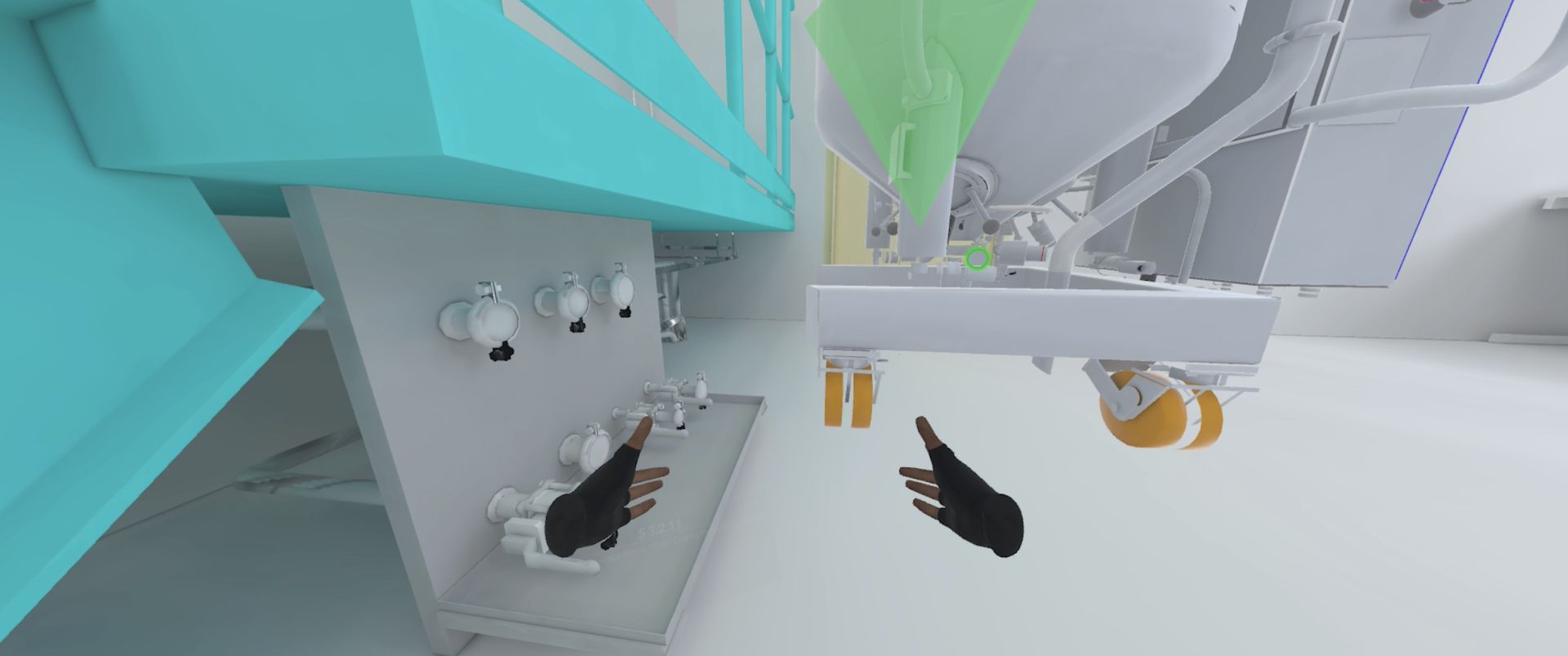Virtuplex Develops VR Training Software
Education of employees is now faster, more secure, and less costly. Virtuplex’s VR training software is a revolutionary way to approach employee education and development.
Education of employees is now faster, more secure, and less costly. Virtuplex’s VR training software is a revolutionary way to approach employee education and development.
The ever-accelerating pace of technological advancement and constantly expanding capabilities of virtual reality make training in VR not just attractive, but also an effective tool for companies of all sizes and industries.
Virtuplex’s knowledge and experience in the business application of virtual reality was utilized by Czech-based company UQest, which focuses on supplying VR/AR solutions tailored to client needs. Virtuplex thus produced an innovative VR training application for a UQest client from the pharmaceutical industry.
The cooperation process began with the transfer of initial data, including a description of the production space and the blueprints of individual machines the future employees needed to learn to operate. Making the training scenarios and materials identical in every step to the actual work process on the production line was crucial to ensure that future employees were properly trained to produce the given pharmaceutical product.
Advantages of Training in VR
“Production is a complicated process with dozens or even hundreds of steps that include the correct set-up of the production line, its launch, and its disassembly and cleaning after the work is done. Without VR training, production would have to be halted and senior employees would then train new personnel. This means massive losses in production and hence finances for the company,” UQest co-founder Tomáš Csiszar said.
The chief benefits of training employees in VR are:
1. Improved orientation in space
Training in virtual reality allows users to move around and interact with a three-dimensional environment, which naturally develops and improves the user’s orientation. This is key in many fields, such as in architecture, medicine, or the pharmaceutical industry where it’s important to understand complicated surroundings and safely move around.
2. Increased user engagement and better simulation of realistic situations
Virtual reality offers an immersive experience that can significantly increase user
engagement by “teleporting” them into realistic scenarios. This method can simulate situations that can be impractical, dangerous, or costly to simulate in real life. Users thus learn in the proper contexts that correspond to real conditions, which increases their understanding and ability to apply the knowledge they learn.
3. Significant acceleration of employee learning curves
The ability to repeat scenarios and tasks in virtual reality accelerates learning among trainees and perfects their abilities. The VR application can be personalized according to the difficulty of the tasks and the speed of training, which means each individual can proceed according to their own abilities. This flexibility and immediate feedback accelerate the learning curve and lead to more effective adoption of the required procedures.
4. Reduced training costs, demands for space, and time needed to train employees
The implementation of VR training can significantly reduce costs compared with traditional training methods, as well as needs for training spaces, costs for travel, trainers, users, etc. VR training can take place anywhere, removing the need for people to be physically present, and allowing employees to learn when it’s best for them, which leads to more effective use of time.
5. A safe environment for repeating complex tasks
One of the biggest benefits of VR training is the ability to safely simulate and repeat complex tasks that in real life could present risk of injury or danger to property. This safe environment is crucial in industries requiring precise abilities and where a mistake could have serious consequences, such as in surgery or working with heavy equipment.
6. The multi-user app allows for sharing a single VR environment with a remote trainer
This multi-user VR application allows trainers and participants to join a single virtual environment from various geographic locations, supporting collaborative training and sharing of knowledge and experience without needing to be physically together. This is especially important for global organizations that can thus effectively train employees from various locations without the need for travel.

“Training employees and educating students in virtual reality is an area that has immense potential. Virtual reality provides experiences that go beyond traditional education methods. This technology offers the singular opportunity for immersive learning of scenarios where employees can safely experiment and learn from their mistakes without affecting the company’s regular operations. Supplying these applications precisely tailored to client needs is thus a direction we will certainly embark upon in the future,” Virtuplex co-founder Pavel Novák said.